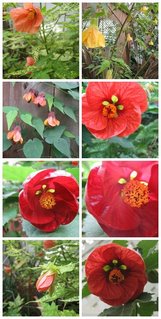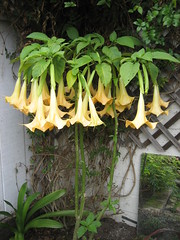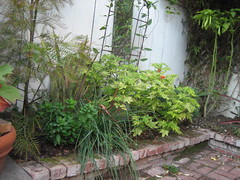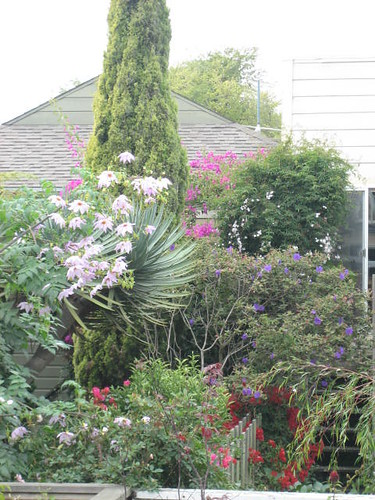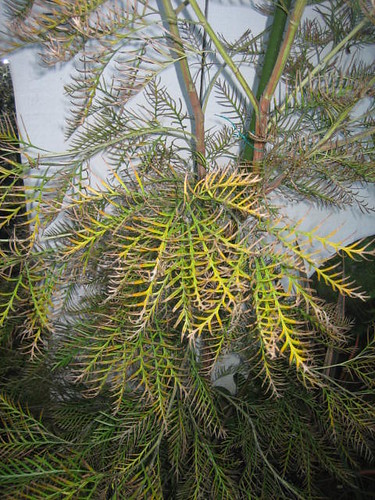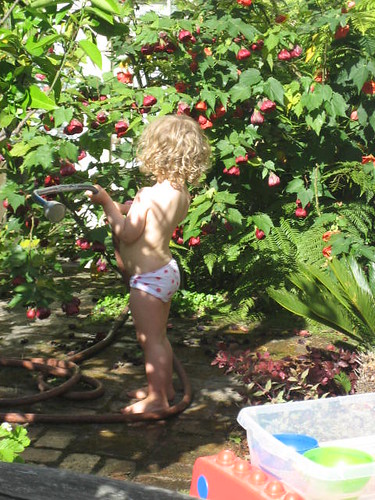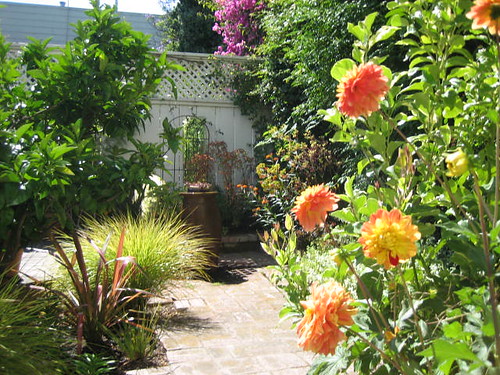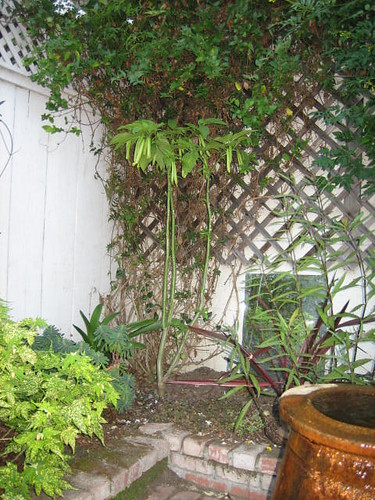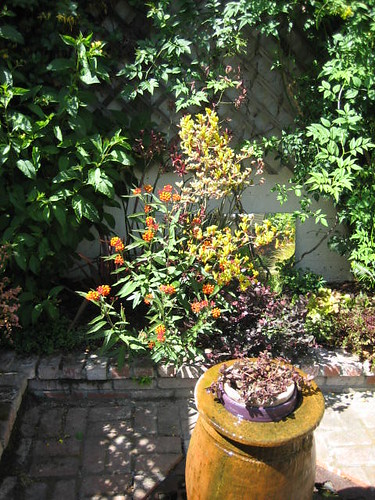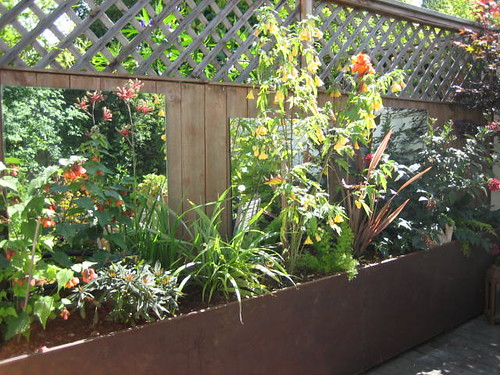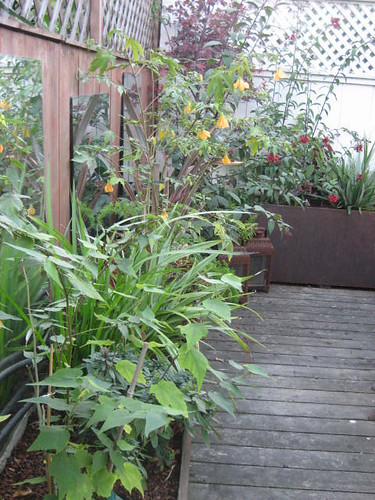
Part of the garden overhaul of 2005 included adding a fountain to the northwest corner. My husband thought it was crazy, and would take up too much space in an already confined layout, especially with the large (4'x3') iron grate set into the brick to cover the sunken catch basin and pump. But, since the grate is a salvaged steel plate, it can easily we walked upon, and therefore doesn't limit the foot traffic as much as anticipated. It is sharp in parts however, and little bare feet need to be watched carefully around it.
We started the project by laying the grate down on the brick and chalking a line around it. Jared used a rotary blade to make a clean line so the grate would fit snuggly against the cut edge. Next we broke up the brick with a sledge hammer, and then lifted it out with a crow bar. We hired a day-laborer to help us dig down into the three feet of clay and dirt, then haul it out into our waiting pickup to take to the dump. (Interestingly, even the dump separates good and bad soil--they'll take the good stuff, but the bad stuff goes on a pile with other 'organic household debris'. This was the third area of the brick patio we’d dug into to create new beds, and in total hauled more than 2 tons of clay earth to the dump. The fee was not cheap.)
We bought the pump, liner and PVC fittings for the urn at our favorite waterworks store, the
urban farmer store, out in the Sunset. You basically say what you’re up to, and the staff will walk you through the bins of fittings, pipe, watering systems and show you exactly what you need. Talk about customer service! The urn itself came from
American Soil Products in Berkeley (though their customer service leaves much to be desired, and can be summed up as DIY). The terra-cotta urn was hand made in Sicily, and has a slightly uneven, rustic and durable quality about it making it perfect for the purpose.
Jared built a wooden frame to secure the liner, and we stapled it onto the outer edge and set it into the hole, against the inside cut-edge of the brick. Next, he threaded the pipe and fittings from the pump, through an upturned terracotta pot set in the hole. We added the grate, then the urn, threading the pipe up through the drilled hole in the base. Next, we poured a batch of quickcrete into the urn around the pipe to ensure it would be stable--we both envisioned our young daughter pulling the urn over on herself. From there we plugged in the pump, filled the basin with water, and voila, we were in business. Almost.
What we forgot was that we would need to clean the filters in the pump as debris fell through the grate and sunk into the catch basin, then sucked into the pump intake filters. With the grate secured in place by an urn filled with concrete, it wouldn't budge. What finally worked, though I have to say I don't clean it as much as it should be done, is to use a wet/dry vac to take out the large matter and leave it at that. For a time we had a pot set into the urn perched on some submerged bricks. But after trying a Fuchsia procumbens variagata, then a sedum, and having them both suffer, I've yet to find just the right plant to cascade over the gurgling fountain. I love it nonetheless.
 I've had these two red cestrums in the planters for almost a year now. The one on the right, in front of the white fence was transplanted from a bed along the northern wall as it was not happy there. I thought it would do better in a shadier position, and it has...however, now that I have a sister plant to compare it to, it once again looks rather sad.
I've had these two red cestrums in the planters for almost a year now. The one on the right, in front of the white fence was transplanted from a bed along the northern wall as it was not happy there. I thought it would do better in a shadier position, and it has...however, now that I have a sister plant to compare it to, it once again looks rather sad.

